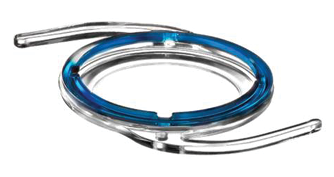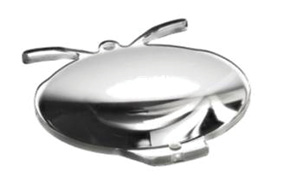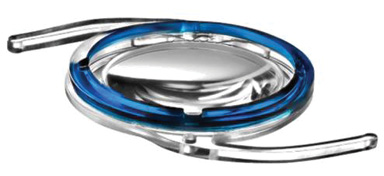
Many modern cataract surgery patients have a low tolerance for imperfect postoperative refractive outcomes and resultant dependence on eyeglasses. Therefore, the need for innovation in postoperative refractive adjustment is greater than ever.1 A modular IOL system, in which the optic component could be exchanged during a simple surgery while the base remains in place, could have significant applications in this setting.
With such a lens system, the dioptric power of the optic could be adjusted at any time throughout the life of the patient, allowing corrections related to the changing refractive status of pediatric eyes, changes in effective lens position due to capsular fibrosis and contraction, and even upgrades to new IOL optic technology as it becomes available. A toric optic could be easily rotated and aligned to the appropriate axis within the stable base component. Also, if a multifocal optic was implanted and the patient could not neurally adapt to it, the optic could be easily exchanged for a monofocal one.
THE HARMONI SYSTEM
The Harmoni Modular IOL System (ClarVista Medical) consists of a hydrophobic acrylic base component and a hydrophobic acrylic optic component (Figure). The anterior rim of the base component is blue to facilitate identification of the rim during attachment of the optic component to the base. We have evaluated this modular system in preclinical studies in our laboratory at the Moran Eye Center using a rabbit model.2-4



Figure. Schematic drawings show the base component (top), the optic component (middle), and the assembled Harmoni Modular IOL System (bottom).
Stability and capsular and uveal biocompatibility were evaluated in short- (6 weeks)2 and longer-term (6 months)4 studies. Stability in the capsular bag and uveal biocompatibility of the system were excellent for up to 6 months in the rabbit model. Due to the design of the base component featuring long loops and peripheral anterior and posterior square edges, the lens appeared to prevent overall capsular bag opacification.
We performed another study specifically designed to evaluate the ease of replacement of the optic of this modular system in comparison with replacement of a standard, commercially available one-piece hydrophobic acrylic lens. A replacement procedure was performed at 2 weeks after implantation, and then an explantation procedure was performed at 6 weeks postoperatively. At both times, explantation and replacement of the optic of the test lens was found to be easier than the control using only standard instruments. More manipulation of the capsular bag—which may result in zonular stress—was needed to free the haptics of the control lenses, especially at the 6-week explantation.
In patients with previous Nd:YAG laser capsulotomies, exchange procedures of standard IOLs can be challenging, sometimes requiring additional vitreoretinal surgery. IOL exchange in these cases would be less likely to result in vitreous leakage, however, if the base component of the IOL did not have to be removed during the procedure.
CLINICAL TRIAL UNDER WAY
Clinical trials of this modular system are currently under way in several locations outside the United States, and US pivotal trials are being planned. The first US pivotal trial is projected to start during the second half of 2019.
1. Ford J, Werner L, Mamalis N. Adjustable intraocular lens power technology. J Cataract Refract Surg. 2014;40(7):1205-1223. Review.
2. MacLean KD, Werner L, Kramer GD, et al. Evaluation of stability and capsular bag opacification of a new foldable adjustable intraocular lens. Clin Exp Ophthalmol. 2015;43(7):648-654.
3. Guan JJ, Kramer GD, MacLean K, et al. Optic replacement in a novel modular intraocular lens system. Clin Exp Ophthalmol. 2016;44(9):817-823.
4. Ludlow J, Nguyen J, Aliancy J, et al. Long-term uveal and capsular biocompatibility of a novel modular intraocular lens system [published online ahead of print January 25, 2018]. Acta Ophthalmol.

